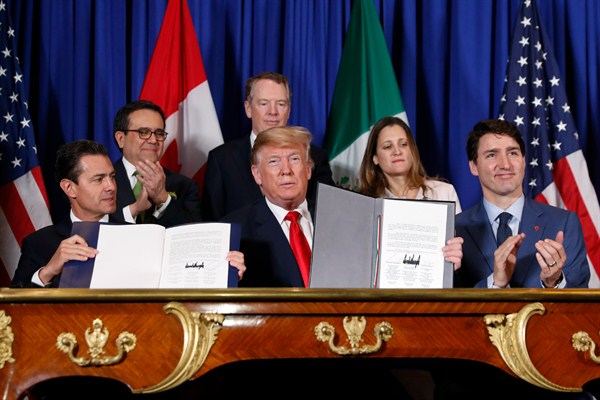Trade negotiators typically prefer to discuss the details of agreements in secret while negotiations are ongoing, only revealing their handiwork when they are done. Even then, however, the length and legal density of trade agreements mean that only trade lawyers and industry specialists can readily figure out how a particular deal will affect ordinary citizens. For example, the U.S.-Mexico-Canada Agreement, as the revised NAFTA is known, has 34 chapters and is roughly 1,000 pages long, to say nothing of its hundreds of additional pages of specific tariff commitments, annexes and side letters.
In the United States, the law governing ratification of trade agreements requires the U.S. Trade Representative to consult with congressional representatives during the course of the negotiation. But only a select group of legislators typically has access to negotiating document drafts, and they are prevented from discussing them publicly in any detail. American negotiators argue that such secrecy is necessary to allow each party to make the politically difficult concessions needed to reach a final deal. If those compromises are discussed publicly, before the full package is put together, negotiators argue that the whole thing could unravel. Once a trade agreement is signed by U.S. negotiators, there are deadlines for disclosing the full text and reporting on potential impacts. But when the implementing legislation goes to Congress for ratification, the rules require that members vote on the full package on an up or down basis, without the opportunity to amend it.
The view that negotiations must occur behind closed doors, with limited public input, might have had some merit in the days when trade agreements were primarily about lowering tariffs and other border measures blocking trade. Those agreements typically involved carefully balancing of gains for exporting interests against losses for import-competing sectors, and with generally modest benefits for the economy as a whole. Today, however, large portions of trade agreements are about setting rules for regulating services, investment, drug patents and other issues that reach behind borders. Similarly, the rule requiring an up or down vote by Congress, originally instituted in 1974, might have been justified at a time when trade negotiations were mostly multilateral—involving 100 countries or more. It is much less so when many negotiations involve only one or a handful of trade partners.

